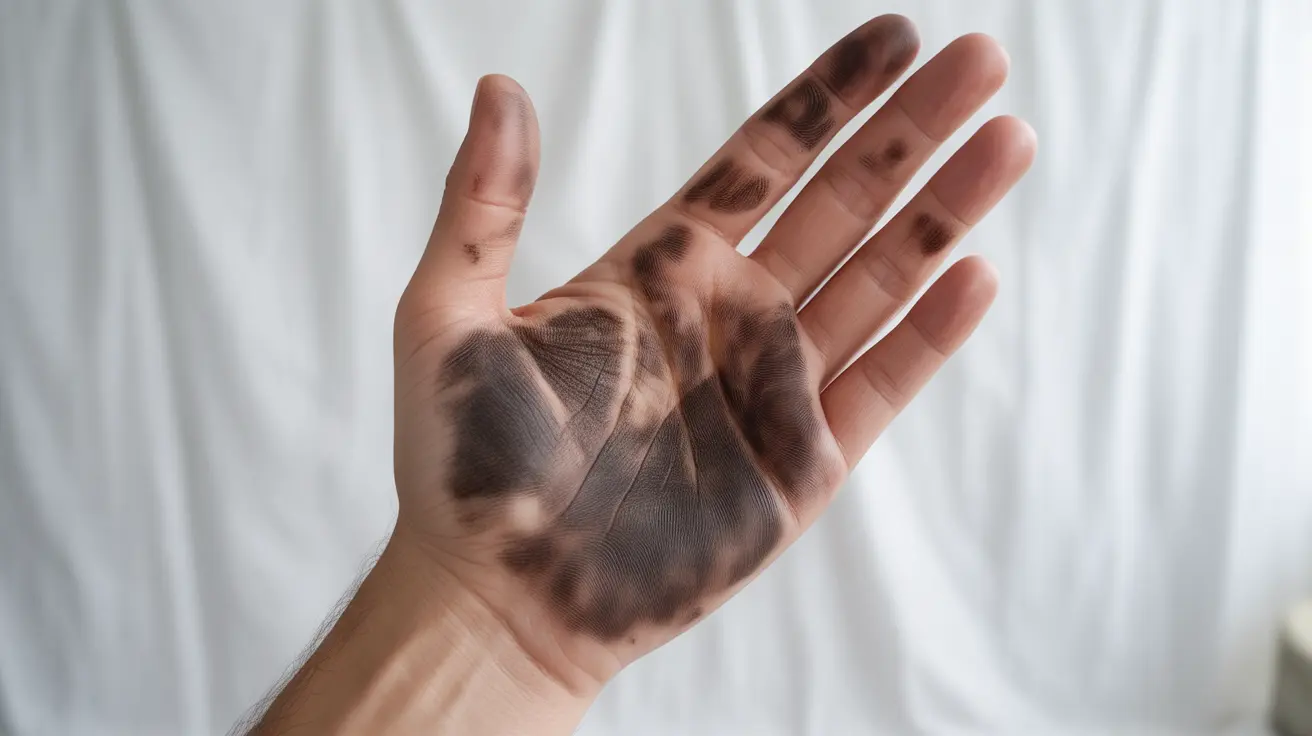Tinea nigra is a rare, superficial fungal infection that primarily affects the palms of hands or soles of feet. Despite its alarming appearance, this condition is generally harmless and highly treatable. Understanding its characteristics, causes, and treatment options can help ease concerns and ensure proper management of the condition.
What is Tinea Nigra?
Tinea nigra is caused by a specific type of fungus called Hortaea werneckii, which thrives in warm, humid environments. This infection creates distinctive dark or brown patches on the skin that might be mistaken for more serious conditions. Unlike other fungal infections, tinea nigra doesn't typically cause itching or discomfort.
Identifying the Condition
The characteristic signs of tinea nigra make it relatively easy to identify:
- Dark brown to black patches
- Non-scaly, smooth appearance
- Usually painless and non-itchy
- Most commonly appears on palms or soles
- Single lesion in most cases
- Clear borders around the affected area
Risk Factors and Causes
Several factors can increase your likelihood of developing tinea nigra:
- Living in or visiting tropical climates
- Excessive sweating
- Prolonged exposure to salt water
- Poor hygiene practices
- Compromised immune system
Diagnosis Process
Healthcare providers typically diagnose tinea nigra through visual examination and may use additional diagnostic tools:
- Wood's lamp examination
- Skin scraping analysis
- Microscopic examination
- Culture tests when necessary
Treatment Approaches
Treating tinea nigra is generally straightforward and highly effective. Common treatment options include:
- Topical antifungal medications
- Keratolytic agents
- Regular gentle exfoliation
- Maintaining dry skin in affected areas
Prevention Strategies
To reduce your risk of developing tinea nigra, consider these preventive measures:
- Keep skin clean and dry
- Use moisture-wicking fabrics in humid conditions
- Practice good hand and foot hygiene
- Avoid prolonged exposure to salt water
- Use antifungal powders in humid conditions
Frequently Asked Questions
What does tinea nigra look like and where on the body does it usually appear?
Tinea nigra appears as dark brown to black patches with clear borders, primarily on the palms of hands or soles of feet. The patches are usually flat, non-scaly, and have a smooth appearance.
How is tinea nigra diagnosed and what tests are commonly used?
Diagnosis typically involves visual examination by a healthcare provider, along with Wood's lamp examination and possibly skin scrapings for microscopic analysis. In some cases, fungal cultures may be performed to confirm the diagnosis.
What are the best treatments for tinea nigra and how long does it take to clear up?
The most effective treatments include topical antifungal medications and keratolytic agents. With proper treatment, tinea nigra usually clears up within 2-4 weeks. Regular gentle exfoliation can help speed up the healing process.
Can tinea nigra spread from person to person or through casual contact?
No, tinea nigra is not contagious and doesn't spread through person-to-person contact. The fungus requires specific environmental conditions to cause infection.
How can I prevent getting tinea nigra if I live in or travel to a tropical area?
Prevention involves keeping skin clean and dry, using moisture-wicking fabrics, practicing good hygiene, and avoiding prolonged exposure to salt water. Using antifungal powders in humid conditions can also help prevent infection.
Remember, while tinea nigra may look concerning, it's a benign condition that responds well to treatment. If you notice unusual dark patches on your palms or soles, consult a healthcare provider for proper diagnosis and treatment.




